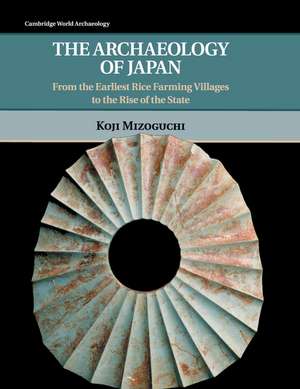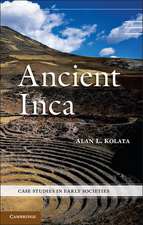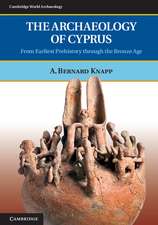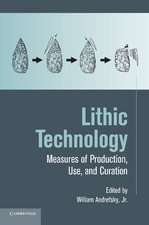The Archaeology of Japan: From the Earliest Rice Farming Villages to the Rise of the State: Cambridge World Archaeology
Autor Koji Mizoguchien Limba Engleză Paperback – 28 feb 2018
| Toate formatele și edițiile | Preț | Express |
|---|---|---|
| Paperback (1) | 289.30 lei 6-8 săpt. | |
| Cambridge University Press – 28 feb 2018 | 289.30 lei 6-8 săpt. | |
| Hardback (1) | 778.20 lei 6-8 săpt. | |
| Cambridge University Press – 24 noi 2013 | 778.20 lei 6-8 săpt. |
Din seria Cambridge World Archaeology
-
 Preț: 202.32 lei
Preț: 202.32 lei -
 Preț: 234.23 lei
Preț: 234.23 lei -
 Preț: 181.13 lei
Preț: 181.13 lei -
 Preț: 236.08 lei
Preț: 236.08 lei -
 Preț: 234.60 lei
Preț: 234.60 lei -
 Preț: 236.42 lei
Preț: 236.42 lei -
 Preț: 281.39 lei
Preț: 281.39 lei - 9%
 Preț: 589.92 lei
Preț: 589.92 lei - 14%
 Preț: 754.53 lei
Preț: 754.53 lei -
 Preț: 286.40 lei
Preț: 286.40 lei -
 Preț: 355.36 lei
Preț: 355.36 lei - 11%
 Preț: 553.39 lei
Preț: 553.39 lei - 11%
 Preț: 548.61 lei
Preț: 548.61 lei -
 Preț: 324.00 lei
Preț: 324.00 lei -
 Preț: 381.45 lei
Preț: 381.45 lei -
 Preț: 247.67 lei
Preț: 247.67 lei -
 Preț: 351.50 lei
Preț: 351.50 lei -
 Preț: 282.54 lei
Preț: 282.54 lei - 11%
 Preț: 454.38 lei
Preț: 454.38 lei - 8%
 Preț: 389.26 lei
Preț: 389.26 lei -
 Preț: 378.04 lei
Preț: 378.04 lei -
 Preț: 468.54 lei
Preț: 468.54 lei -
 Preț: 320.13 lei
Preț: 320.13 lei - 14%
 Preț: 719.47 lei
Preț: 719.47 lei -
 Preț: 420.02 lei
Preț: 420.02 lei - 11%
 Preț: 464.85 lei
Preț: 464.85 lei - 14%
 Preț: 773.24 lei
Preț: 773.24 lei - 11%
 Preț: 488.03 lei
Preț: 488.03 lei -
 Preț: 467.68 lei
Preț: 467.68 lei -
 Preț: 354.89 lei
Preț: 354.89 lei - 11%
 Preț: 706.20 lei
Preț: 706.20 lei - 14%
 Preț: 916.83 lei
Preț: 916.83 lei - 11%
 Preț: 523.70 lei
Preț: 523.70 lei -
 Preț: 461.01 lei
Preț: 461.01 lei - 11%
 Preț: 645.61 lei
Preț: 645.61 lei
Preț: 289.30 lei
Nou
Puncte Express: 434
Preț estimativ în valută:
55.36€ • 57.80$ • 45.82£
55.36€ • 57.80$ • 45.82£
Carte tipărită la comandă
Livrare economică 04-18 aprilie
Preluare comenzi: 021 569.72.76
Specificații
ISBN-13: 9780521711883
ISBN-10: 0521711886
Pagini: 391
Ilustrații: 105 b/w illus. 21 tables
Dimensiuni: 216 x 280 x 22 mm
Greutate: 0.91 kg
Editura: Cambridge University Press
Colecția Cambridge University Press
Seria Cambridge World Archaeology
Locul publicării:New York, United States
ISBN-10: 0521711886
Pagini: 391
Ilustrații: 105 b/w illus. 21 tables
Dimensiuni: 216 x 280 x 22 mm
Greutate: 0.91 kg
Editura: Cambridge University Press
Colecția Cambridge University Press
Seria Cambridge World Archaeology
Locul publicării:New York, United States
Cuprins
1. Introduction: the beginning of everything?; 2. A tale of co-transformation: the history of modern Japan and the archaeology of the Yayoi and Kofun periods; 3. Frameworks; 4. Environment and the East Asian context; 5. Beginnings: from the Incipient Yayoi (900/600 BC) to the Late Yayoi I periods (400/200 BC); 6. An archaeology of growth: from the Final Yayoi I (400/200 BC) to the end of the Yayoi IV (AD 1/50); 7. An archaeology of hierarchisation: from the final Yayoi IV to the Yayoi V periods (AD 1/50~200); 8. An archaeology of networks: the Yayoi–Kofun transition (the Shonai pottery style and the earliest Furu pottery style phase, AD 200~250/275); 9. An archaeology of monuments: the Early Kofun (AD 275~400) and Middle Kofun periods (AD 400~500); 10. An archaeology of bureaucracy: the Later Kofun period (AD 500~600); 11. An archaeology of governance: the establishment of the Ten'no emperor (AD 600~700); 12. Conclusion.
Notă biografică
Descriere
The first book-length introduction to the Yayoi and Kofun periods of Japan (c.600 BC–AD 700).









